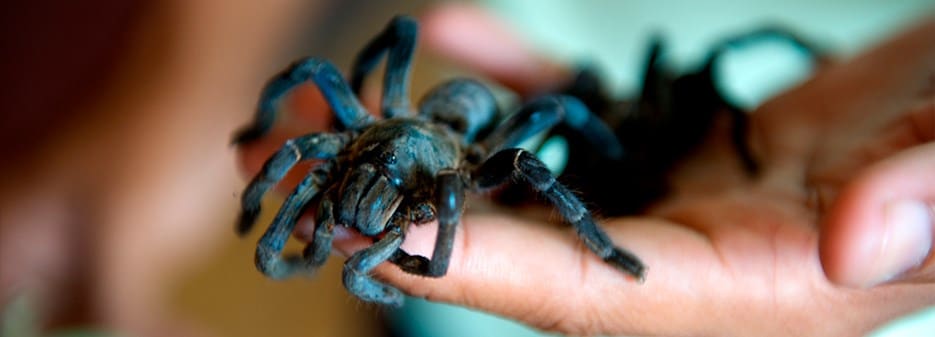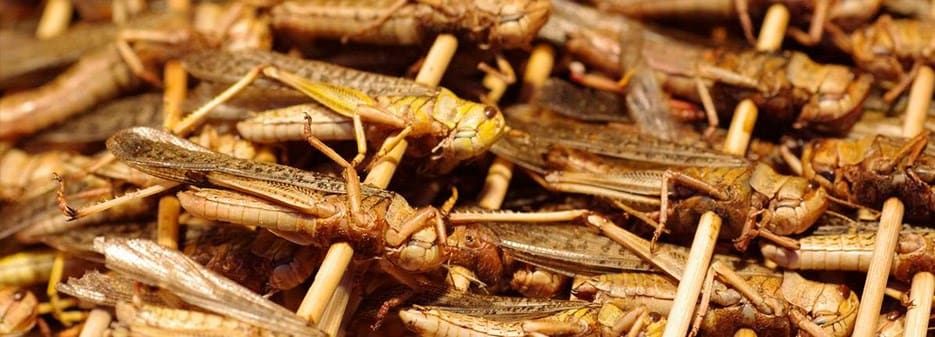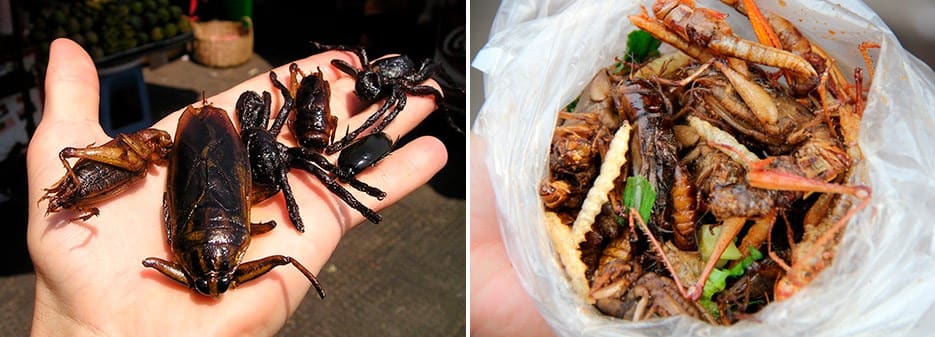My initiation into entomophagy – the eating of insects – was the first step in disengagement from the habits of a lifetime, the system of taste that holds a human being together from childhood. This is different for Europeans, and indeed, most Westerners, compared to those who grew up in Asia and areas in which the consumption of insects is a sustainable, straightforward superfood. I was raised on Cadbury’s chocolate and crumpets; so the idea of eating insects was as far from my culinary leanings as possible.
Later in life, while living in Southeast Asia, I sampled a little more, followed by fully indulging myself in a creepy-crawly diet – outside of drunken dares. Food in the region is a contrasting flavour-wheel, zipping across sweet, sour, bitter, spicy… raw and cooked.
Insects now, of course, are eaten almost everywhere. René Redzepi and the Nordic Food Lab played a significant role in popularising their consumption. Last year on his Instagram page, Redzepi wrote that a honey ant was, “the best thing I ate in 2017” going on to explain the taste in more detail, “their abdomen, the size of a small grape, is full of sweet and sour nectar. It’s seriously amazing,” he wrote.
Visualizza questo post su Instagram
Un post condiviso da Rene Redzepi (@reneredzepinoma) in data: Lug 14, 2018 at 6:17 PDT
In Indonesia, they make a snack out of curried dragonflies called sky prawns. In Thailand, they make rot duan, a dish of deep-fried bamboo worms. In Mexico, modern restaurants are renovating an ancient tradition by adding ants, grasshoppers, and worms to their iconic dishes. But worms and insects have been cancelled, by biblical decree, from the diets of most Caucasians.
For me, it was in Cambodia where I was introduced to an expansive offering of creepy-crawly varieties and a deep-dive into a wealth of strange insect activity. It took only a few seconds of perusing the wares in a Phnom Penh food market before realising what the trays were filled with. A few signs displayed names in English, but you don’t have to be a professor in entomology to see that a snake is a snake and a cockroach is a cockroach. The vendor behind the cart removed an aerosol from under the wagon and squeezed the nozzle, releasing a spritz of liquid grease. “Special sauce?” he asked, spraying another mist of lubricant over my order of half-a-dozen giant water-bugs.
Cambodia, perhaps more than any other country, actively serves and promotes the eating of insects. Even before ants were considered trendy, popping up on menus in Copenhagen, London and Melbourne, the cuisine of Cambodia was centred around edible creepy-crawlies. The country had suffered under Khmer Rouge, the radical militia who imposed collective farms and burnt cookbooks, and the population, forced into poverty, were required to feed on anything they could.
Today, Cambodia continues to eat and embrace insects. They are more than a street food staple here, more than a culinary gimmick for tourists, and can be found in markets and on restaurant menus all around the country. According to a report from the Food and Agriculture Organization of the United Nations (FAO), insects are the future for world food security. Here’s a run through of some of the most popular – but not always most delicious – examples of the Cambodian creepy-crawly diet.
Maggots
Firstly, the positives: maggots are tiny little chubby worms that are widely available and, with some seasoning and a dash of soy, go down in handfuls very easily – just throw ‘em back like they were popcorn.
In fact, served with Cambodian pickled limes, they’re really rather pleasant. In Siem Reap's vibrant night market, you purchase them by the weight. You can also find them deep-fried with chillies and spring onions.











